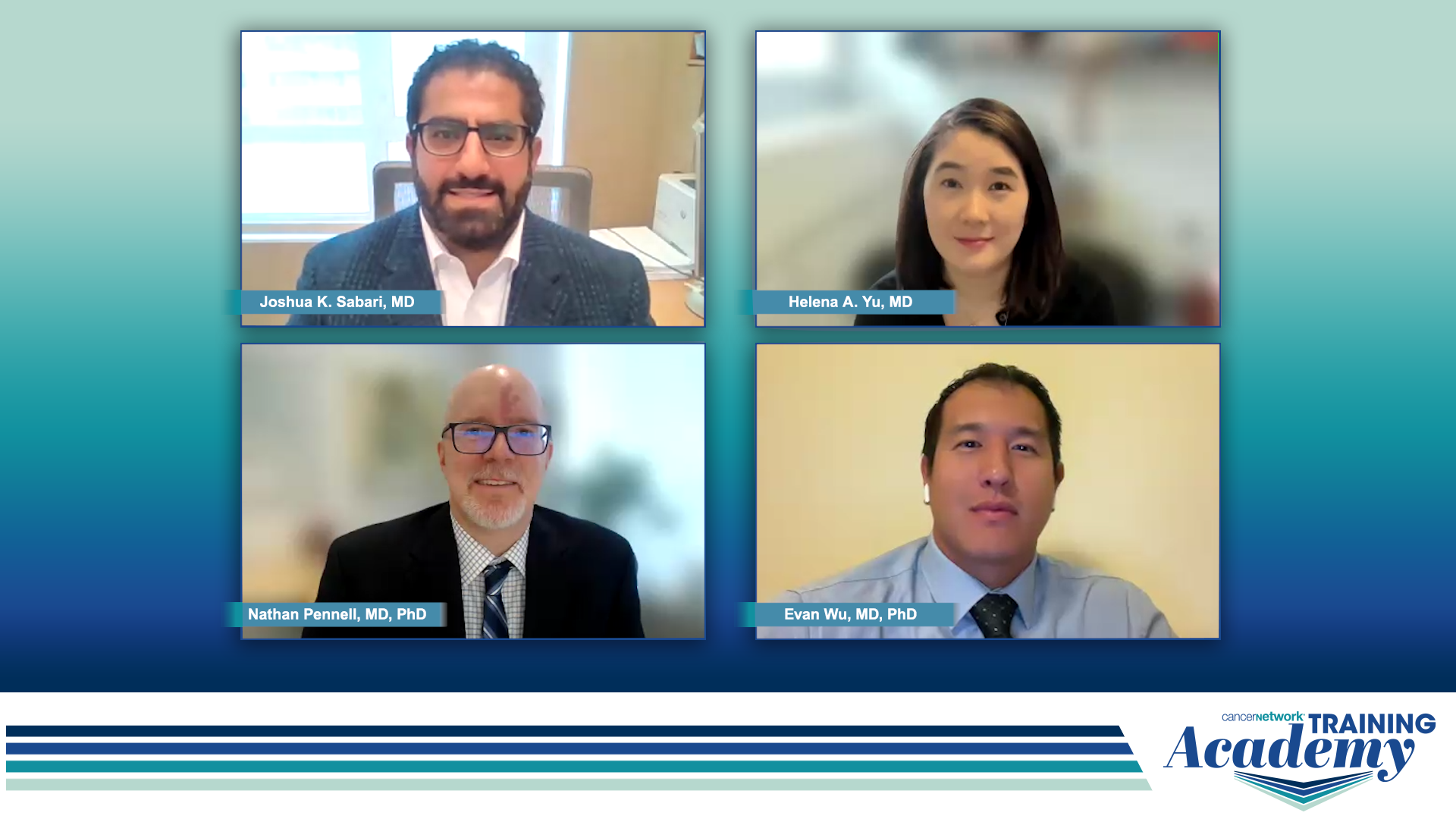Lung Cancer Immunotherapy Updates From ASCO
In this podcast interview, Dr. Hossein Borghaei discusses some of the latest science presented at ASCO that focuses on immunotherapy in lung cancer.
Hossein Borghaei, DO, MS

Following the American Society of Clinical Oncology (ASCO) annual meeting, held June 2-6 in Chicago, Illinois, we spoke with Dr. Hossein Borghaei about some of the important immunotherapy lung cancer results that were presented at the meeting. Dr. Borghaei is the chief of the division of thoracic medical oncology and specializes in the treatment of patients with lung cancer at the Fox Chase Cancer Center in Philadelphia, Pennsylvania.
-Interviewed by Anna Azvolinsky, PhD
OncoTherapy Network: There are now immune checkpoint inhibitor antibodies that are approved by the Food and Drug Administration for the treatment of patients with lung cancer, and there are many clinical trials testing combinations of drugs that include at least one such immune checkpoint inhibitor. Can you give a brief overview of the settings in which the immune checkpoint inhibitors are currently used, and what is needed from these combinations of drugs, given that there are already FDA-approved immune checkpoint antibodies?
Dr. Borghaei: The approval of immune checkpoint inhibitors has led to widespread use of these agents in the appropriate setting-in patients who have progressed after having platinum doublet chemotherapy as a standard of care, for the most part. We have three drugs in that category that are being used with appropriate FDA approval. Some of these drugs require PD-L1 testing of the tumor and some do not require any testing. There is also a slight difference in the scheduling of these drugs. For instance, nivolumab is a drug that is given on an every-2-week basis, and pembrolizumab and atezolizumab are drugs that can be given on an every-3-week dosing schedule. So in terms of convenience, there are a few treatment options for physicians and patients.
One of the biggest changes in the practice of lung cancer over the past few years is that pembrolizumab has been approved for front-line treatment, meaning at the time of initial diagnosis without any prior chemotherapy, but only for patients who have tumors that express greater than 50% of the PD-L1 marker based on the Merck assay. The approval came after a phase III study showing that single-agent pembrolizumab, again in this very particular patient population, had better progression-free survival (PFS) and overall survival as compared with platinum doublet chemotherapy. There are many nuances about this study that one can discuss, but the overarching conclusion is that single-agent is better than platinum doublet. As a result, we have changed our practice based on this study and based on the FDA approval. Interestingly, the combination of pembrolizumab plus a platinum doublet chemotherapy has also been recently approved by the FDA for patients with nonsquamous non-small cell lung cancer, regardless of PD-L1 expression. This recent approval is based on a randomized phase II clinical trial and it appears that community oncologists are choosing to treat their patients with this combination. We are still hoping to have data from a randomized phase III trial, which appears to have finished accrual, as the results will give us more confidence that this combination is in fact better than just chemotherapy followed by immunotherapy. So there is a lot happening in the field with the approval of these drugs, and we are looking at newer combinations and moving these agents to the front line with the goal of improving patient survival.
OncoTherapy Network: What are some of the compelling combination therapy data that you saw presented at the ASCO meeting?
Dr. Borghaei: I have seen the updated data from the chemo plus pembrolizumab combo, since I am a co-author of that particular study. This was a poster presentation update showing that PFS remains superior with the combination and the overall survival has not necessarily changed significantly between the two arms of the study [chemo alone or chemo plus pembrolizumab]. The other combination that we saw an update on is ipilimumab plus nivolumab for both non-small cell and small cell lung cancer. The numbers are still a little bit small, although more patients are being treated in the non-small cell cohort. But these are the kinds of combinations currently in phase III studies from which we are expecting more results. The other study I thought was interesting was the combination of an immunotherapy plus an IDO inhibitor, which was used in a phase I trial with multiple cohorts that included lung cancer and melanoma and a few other disease sites. And to be very honest with you, I only follow lung cancer for the most part, but I thought it was interesting that the combination of an IDO inhibitor and an [immunotherapy] agent had good tolerability in terms of side effects and toxicity. The response rate that we saw in the lung cohort was around 35% or 36%, maybe a bit higher. Again, the numbers were kind of small for each cohort and I think further work is needed to establish the true activity of this combination, but for the first time we may actually have a combination with an IDO inhibitor that is showing promise.
OncoTherapy Network: Are there specific combinations or types of trials that you would like to highlight that were not presented at the meeting?
Dr. Borghaei: There are a large number of combinations that are being tested in various clinical trials, so it’s impossible to list all of them. There are protocols by many companies where different cohorts of patients are being treated with different [immunotherapy] combinations. Usually, there is some sort of checkpoint inhibitor that is being combined with another drug, which could be another checkpoint inhibitor or another immunotherapy drug, or even a drug that interferes with a completely different pathway. So, all of these small subsets and cohorts of combinations are being looked at to basically see if the response rate or PFS can be improved. Some of them are just being done to get a sense of the feasibility and tolerability of the agents with an eye toward looking at clinical activity. There are too many to mention really, but I think there is a lot of interest because a couple of these combinations, like the IDO inhibitor combination that we just talked about, are really showing significant promise in the clinic. We are hoping that as we learn more and more about the tumor microenvironment and the way the immune system really functions, we can use these drugs that interfere and interact with the immune system in the hopes of improving the clinical outcome for patients with various incurable cancers. I think the field is young and that we still have a lot to learn. Which drugs will go forward to phase III trials and which ones are going to be available for everyday clinical practice is anybody’s guess at this point, but the field is moving very rapidly and we are going to learn quickly which combinations are worth pursuing and which ones we should come back to or completely disregard.
OncoTherapy Network: Thank you so much for joining us today, Dr. Borghaei.
Dr. Borghaei: Thank you.
Newsletter
Stay up to date on recent advances in the multidisciplinary approach to cancer.




